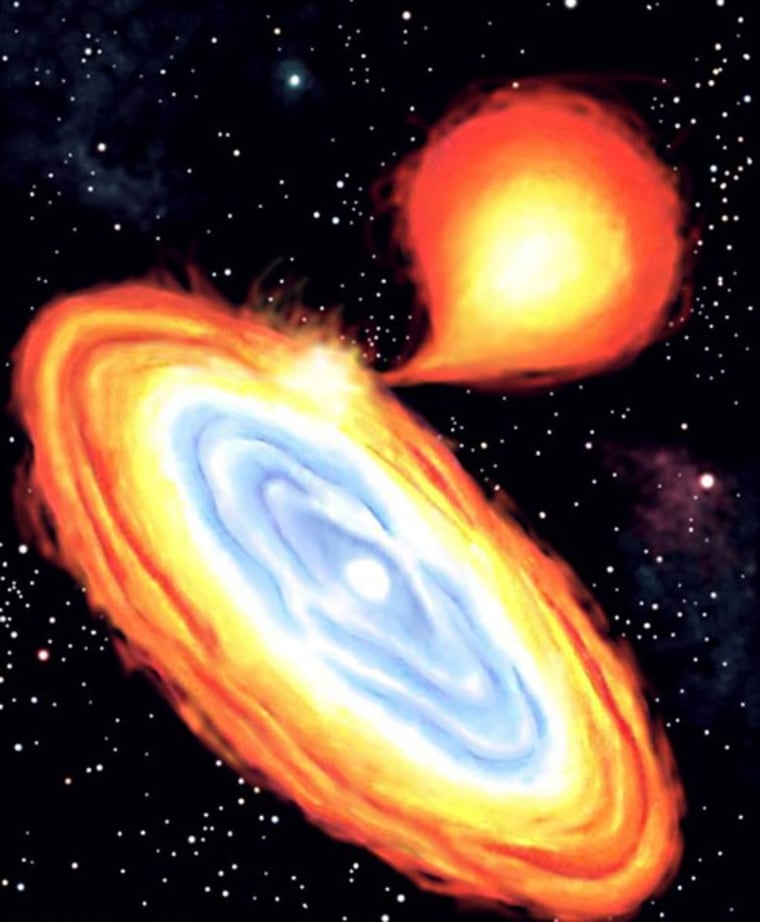A new type of supernova — the explosive death of a star — has been discovered in which helium detonates on the surface of a white dwarf star.
The exploding star, dubbed SN2002bj, was first observed seven years ago in the galaxy NGC 1821 by amateur astronomers, but was misclassified as a Type II supernova.
There are two general types of supernovas: In a Type I, a star accumulates matter from a nearby neighbor until a runaway nuclear reaction ignites. In a Type II, a star runs out of nuclear fuel and collapses under its own gravity.
But SN2002bj had a different signature than any of the variations known in these two types. In particular, it brightened and dimmed over the course of less than 27 days, whereas most supernovas brighten and dim over three or four months.
"This is the fastest evolving supernova we have ever seen," said Dovi Poznanski of the Lawrence Berkeley National Laboratory. Poznanski rediscovered the supernova while searching through old observations.
Slideshow 12 photos
Month in Space: January 2014
The rapid dimming of the supernova and certain signatures in its spectrum, such as a strong helium signal, suggest that this star exploded by a previously unknown mechanism, first proposed by Lars Bildsten of the University of California, Santa Barbara.
The idea involves a binary pair of white dwarfs, one of which is primarily made of helium that is being slowly siphoned off by its companion. When enough helium accumulates on the surface of the main white dwarf, an explosion occurs that powers a faint and brief thermonuclear supernova.
This process is akin to a nova, where matter, mainly hydrogen, falls onto a star, slowly building up and then exploding, but with less force then a full-fledged supernova. SN2002bj had about 1,000 times more energy than a typical nova though.
Christopher Stubbs of Harvard University has jokingly dubbed these ".Ia" supernovas, because they are one-tenth as bright and last for one-tenth the time as a Type Ia supernova.
The new supernova is described in the Nov. 6 issue of the journal Science.
More on: supernovas

